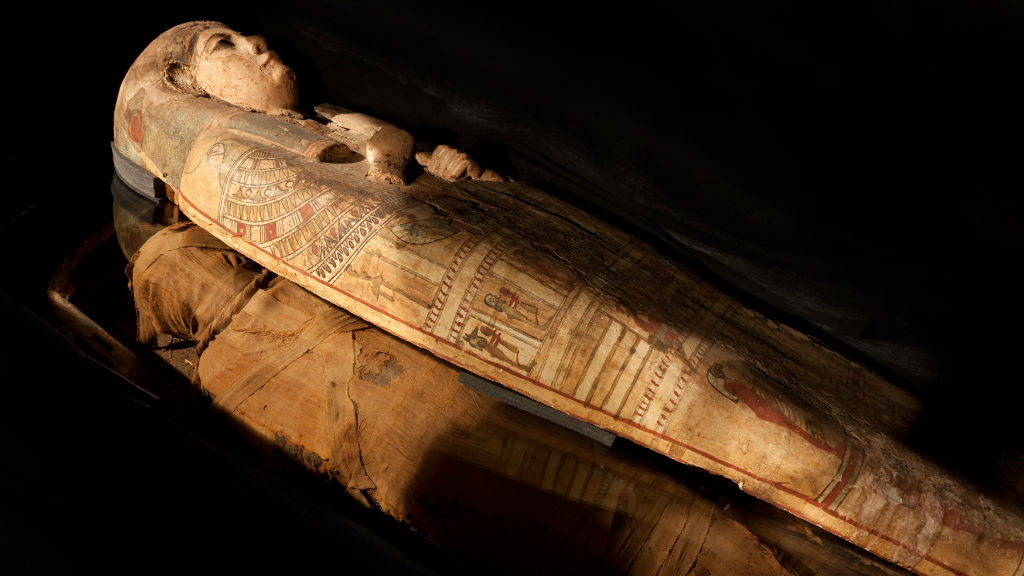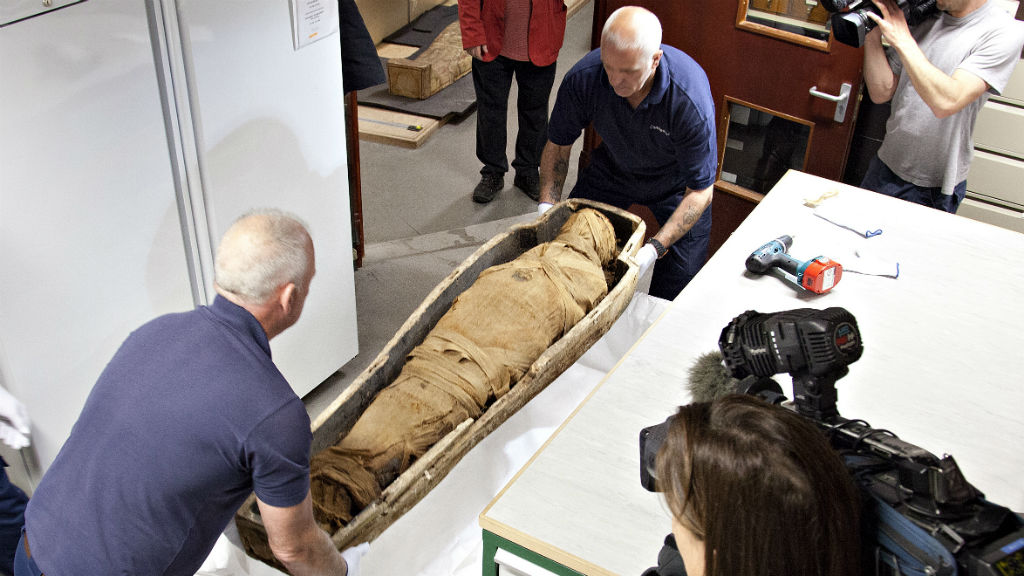Mummy returns as scientists probe what lies beneath
Scientists have begun to uncover the mysteries behind a 3,000-year-old Egyptian mummy discovered by chance after more than seven decades in storage.

The mummy was taken to the Royal Manchester Children’s Hospital for a conventional X-ray and CT scan for the very first time. Researchers are piecing together the life and death of what lies beneath the bandages.
The exhibit has never been studied before and was stumbled upon by chance. Dr Lidija McKnight, who is part of the Ancient Egyptian Animal Bio Bank project at Manchester University, told Channel 4 News: “We didn’t even know the coffin existed until I contacted Perth about specific animal mummies that we were keen to examine.”
The Animal Bio Bank project has been collecting data and images on animal mummies in the UK and USA since 2010 and includes cats, dogs, fish and crocodiles.
From Thebes?
The human mummy was last night transported from Scotland to the north west by specialist couriers experienced in dealing with priceless artefacts. The coffin lid was loose, so the curators knew there was a mummy inside, but they did not know any more about it.
Speaking before the scans were carried out, Dr McKnight, a research associate, said: “It was donated to the Perth Museum in Scotland in 1936 from an antiquities society, the Alloa Museum, when it closed.
“No-one has opened the coffin since it was acquired, which is covered in a thick layer of sand and dirt. We will be examining the coffin carefully to see if it can reveal where the mummy is from.
“We think that it may have come from the ancient city of Thebes and that the individual could be female, but until the tests are run we can’t be sure. The scan will be done with the top half of the coffin removed.
“The bandages may well be intact, but if there are areas which are damaged, then we could take small samples to run further scientific tests.
“Hopefully we should be able to piece together that person’s life story and reveal details of diet and any diseases and how the body was treated by the embalmers.”
‘Extensive disruption’
Following the scans, researchers found that the mummy bundle contains an adult skeleton. However, despite being in a coffin it has suffered “extensive disruption” to its central section (thorax and upper limbs).
Dr McKnight said: “It’s not possible yet to confirm the sex due to disruption to the pelvis most likely caused post-desiccation (after the body dried out).
“The brain appears to have been removed. We are hopeful that, given time, we will be able to give this individual a name (and possibly that of the parents) based on the hieroglyphs on the sarcophagus (coffin); however some conservation treatment is required first to clean off the surface.
“All in all, a fascinating evening and the real work of sifting through the images begins now to answer some of the questions this mummy and the sarcophagus poses.”

-
Latest news
-
Windrush scandal: returning to the UK after a forty year wait6m

-
Netanyahu ‘survival’ depends on ‘expanding war’ says head of Palestinian National Initiative5m

-
Proposed law change could strip parental rights from paedophiles5m

-
Hugh Grant settles privacy lawsuit against The Sun newspaper publisher2m

-
Post Office Scandal: what did top executive know?6m

-




